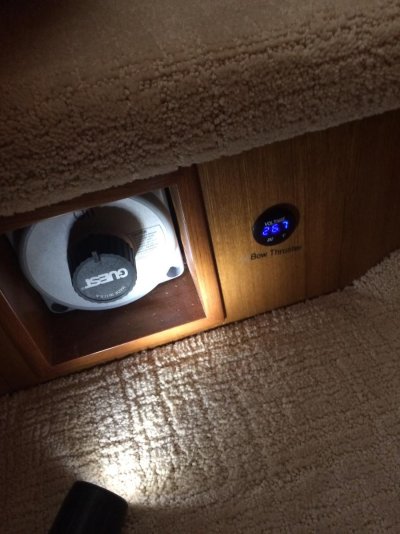Codger2
Guru
- Joined
- Oct 11, 2007
- Messages
- 6,691
- Location
- US
- Vessel Name
- Circuit Breaker
- Vessel Make
- 2021..22' Duffy Cuddy cabin
Although I have the Maretron SOC program on my boat, The MFD where I monitor the SOC is on the bridge and is not readily available when on the hook, mooring or even in the slip. I wanted something that I could simply glance at when walking through the boat that would give me an immediate status of my House, Engine & bow thruster battery banks. I purchased these 12-24v volt meters from Amazon and installed them in places that are easily read. The two in the photo are under my dinette and are labeled "Engines" & "House." The second photo is forward in the master cabin by the bow thruster battery switch & is labeled "Bow Thruster." (24v bank) Now, when casually walking through the boat, I know the SOC of the various banks with just a glance. When running, they also indicate the charging volts (or lack of if the alternators are inoperative.) I also put one on the dinghy's dash.
https://www.amazon.com/gp/product/B01FH9NJ7O/ref=oh_aui_detailpage_o00_s00?ie=UTF8&psc=1
https://www.amazon.com/gp/product/B01FH9NJ7O/ref=oh_aui_detailpage_o00_s00?ie=UTF8&psc=1
Attachments
Last edited:




